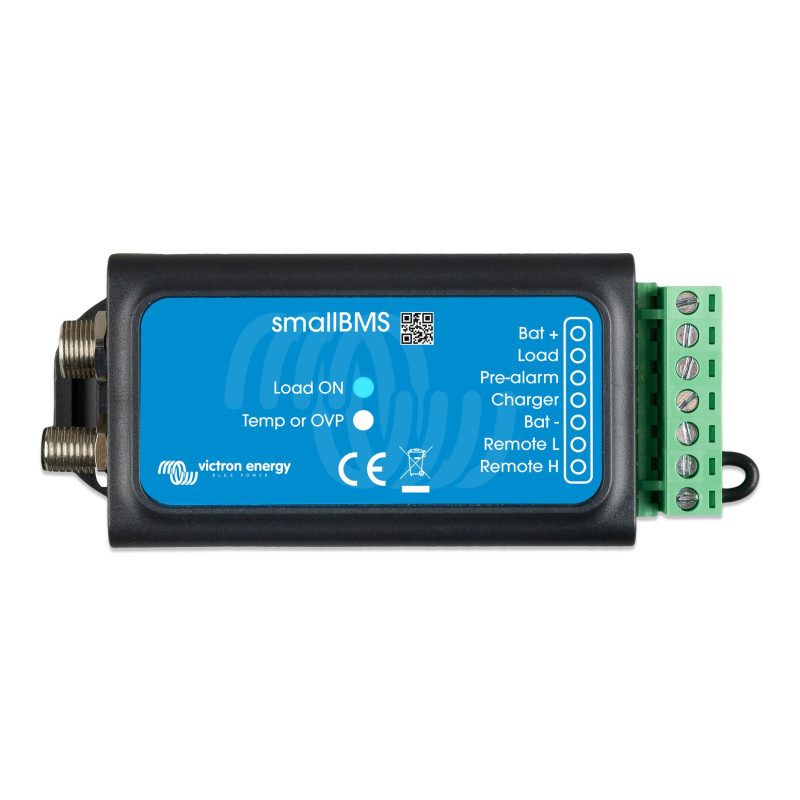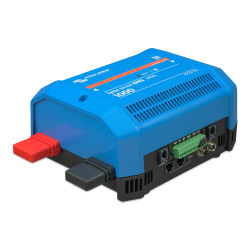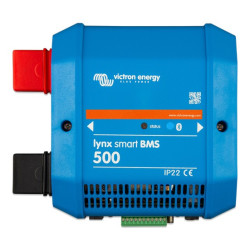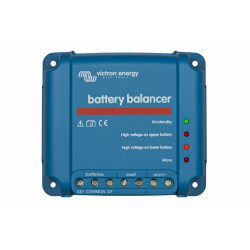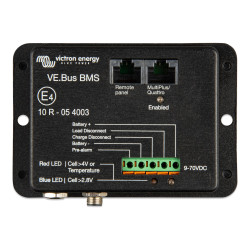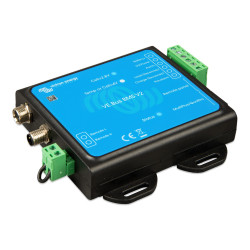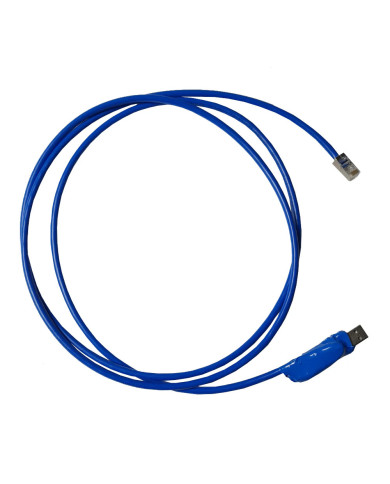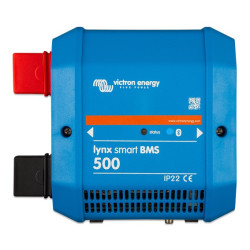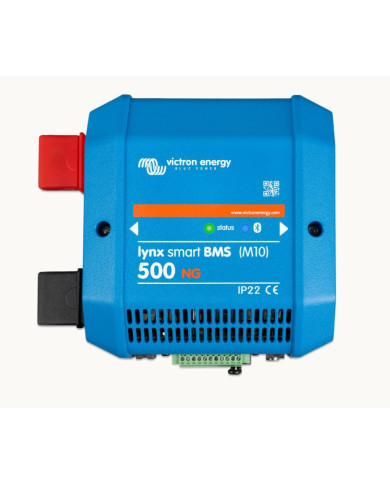Victron smallBMS
Victron smallBMS
A simple and low cost alternative to the VE.Bus BMS V2
The smallBMS can replace the VE.Bus BMS V2 in several applications. It is however not suitable for use with VE.Bus MultiPlus and Quattro inverter/chargers: it has no VE.Bus interface. The smallBMS is intended for use with Victron Smart LiFePo4 batteries with M8 circular connectors.
The smallBMS has two outputs, similar to the VE.Bus BMS V2.
Victron smallBMS
Features
• Load disconnect output: Can be used to control the remote on/off input of a BatteryProtect, Inverters, DC-DC converter or other loads that have remote on/off port functionality. Due to its maximum output current of 1A, it can even control a high-current relay or a contactor. Note that a non inverting or inverting on/off cable may be required, please consult the manual.
• Pre-alarm output: The pre-alarm output can be used to issue a visible or audible warning when the battery voltage is low and will trip with a minimum delay of 30 seconds before the Load disconnect output is disabled due to cell undervoltage.
• Charge disconnect output: Can be used to control the remote on/off port of a charger, such as the Phoenix Smart Charger IP43, a Cyrix-Li-Charge relay, a Cyrix-Li-ct Battery Combiner or a BatteryProtect. The output is normally high and becomes free floating in case of imminent low cell voltage or high/low temperature. Note that the Charge disconnect output is not suitable to power an inductive load such as a relay coil.
• Remote on/off terminal: Both the Load and Charge disconnect output can be controlled remotely via the remote on/off terminal. When off, both outputs will be free floating so that loads and chargers are turned off.
• LED indicators: The smallBMS has two LED indicators, a blue LED indicating that the Load disconnect output is still high and the cell voltage is above the threshold set in the battery, and a red LED indicating that the Charge disconnect output is low due to high/low cell temperature or high cell voltage
1) To reduce required balancing time, we recommend to use a little different batteries in series as possible for the application. 24 V systems are best built using 24 V batteries. And 48 V systems are best built using two 24 V batteries in series. While the alternative, four 12 V batteries in series, will work, it will require more periodic balancing time. For more information on these batteries, visit the Lithium Smart Battery product page.
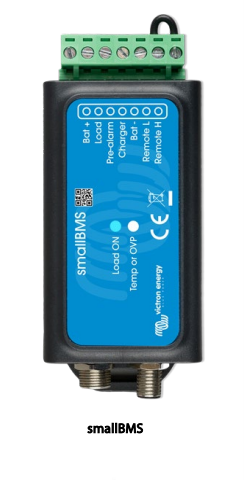
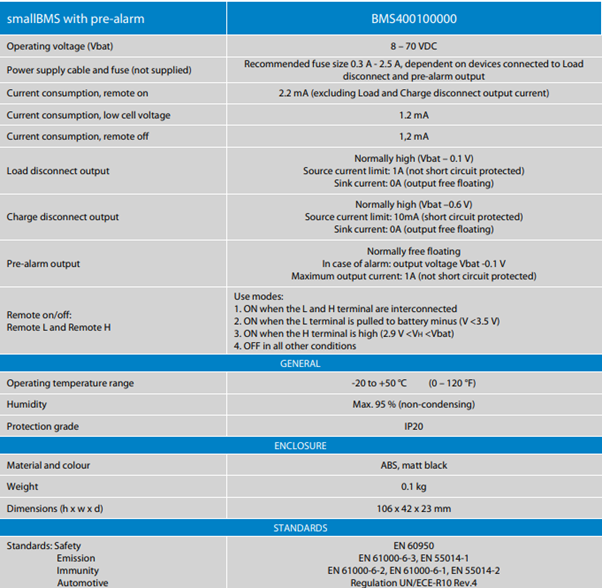
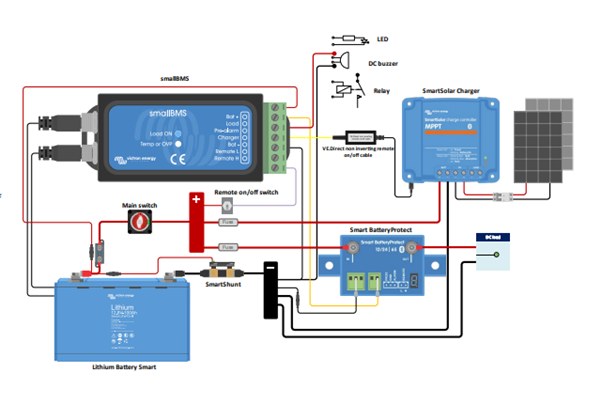
Reviews
No customer reviews for the moment.
You need to be logged in or create an account to give your appreciation of a review.


